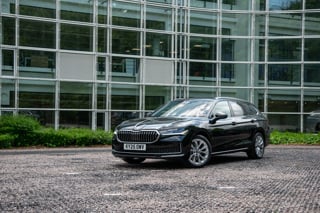True fleet was the largest driver of registrations growth in 2016 as a number of manufacturers put additional resource into improving their penetration in the corporate sector.
Leasing/contract hire registrations were up 9% at 447,282 with year-on-year growth fairly consistent across the year. However, second half growth post Referendum vote was at a slightly lower level than first half, at 6.6% year-on-year versus 11.7% in the first six months.
Meanwhile, fleet other registrations – largely sales to end-user fleets – were up 4.3% at 465,236, with the biggest growth in the final quarter of the year, up 10.7% year-on-year.
Combined, true fleet was up almost 6.7% (912,518 units) compared to the total UK car registrations growth of 2.25% which, at 2,692,786 units, was the fifth consecutive year of growth and resulted in a new record high.
Leading the charge among the main brands was Land Rover, with true fleet sales up 58.5%, followed by Kia (up 51.3%), Jaguar (50.7%), Mini (25.7%), Renault (21.1%) and Volvo (20.4%).
Volkswagen Group brands returned mixed results in the wake of the emissions scandal which broke towards the end of 2015.
Volkswagen, which historically sells the most cars into true fleet, saw its registrations fall by almost 10% year-on-year, or 8,516 units. Its 78,811 units have been leapfrogged by BMW, now top on 86,202 (up 17%), and Mercedes-Benz on 81,908 (up 18%).
However, Volkswagen did not take a knee-jerk reaction to the loss in sales by flooding the rental sector; registrations here also fell, by 30%. It did offset some of this lost volume, though, via its own employee scheme (captives), which increased by 58% or 3,397 cars.
In a statement the company said its decision to “deliberately move focus away from certain high-cost business channels” accounted for a significant proportion of the overall reduction in market share.
Alison Jones, director of Volkswagen UK, said: “These results are very pleasing, and demonstrate that Volkswagen continues to appeal to large numbers of UK new car buyers. We will carry this strong performance and momentum into 2017, as we embark on a very exciting year for the brand.”
It was a different story at Audi, which bumped up its rental penetration by 10% but also saw a 6% rise in true fleet sales. Seat and Škoda both registered true fleet rises of around 3.5%. Seat also reduced its rental business by 17.4% while Škoda pushed more into the channel with a 9% rise.
Volkswagen was one of just five manufacturers to experience a reversal in true fleet sales, according to Society of Motor Manufacturers and Traders (SMMT) figures. Citroën suffered the year’s biggest drop, down 16%, while sister company Peugeot was down 12%. Nissan was down 6% and Vauxhall 5.8%. All four were hit hardest in the leasing sector.
Rental registrations across the market fell by 2.7% in total to 238,496 with a big reduction in Q4 (-10.6%) after a large rise in Q3 (13.6%). As usual, the largest proportion of sales (57%) were in the first half of the year.
Vauxhall provided much of the impetus for the Q3 rise after pumping an additional 7,864 cars into rental, an increase of 87.6%. Its 16,843 units accounted for almost 29% of the rental registrations in that quarter.
Over the course of the year, Vauxhall increased its rental business by a little more than 5%, a reversal of recent policy but one which made up for some of the reduction in true fleet. It now accounts for almost 22% of the market’s rental registrations, up two percentage points on 2015.
Land Rover and Jaguar both registered significant increases in rental business, although it is part of their company strategy to get the latest products out into the market. Rises of 21.5% and 78% respectively are intended to put more people behind the wheel in an attempt to change perceptions about two brands that have undergone a substantial reinvention in recent years. Big rises in private registrations, especially for Jaguar, seem to justify this decision.
One manufacturer that does seem to be reacting to a dip in both private and true fleet registrations is Nissan. It raised rental registrations by 37% with the majority of the growth coming in the second half of the year where it increased units by 170%.
The only Nissan model to record a notable rise in registrations last year was the X-Trail, up 76.5% across all sectors. Qashqai registrations rose slightly, by 3% but every other model was down.
Mike Hawes, chief executive of SMMT, said the 2016 market had “proven more resilient than we expected” because of “strong fundamentals”.
These included high levels of consumer and business confidence and affordable finance, particularly PCP and PCH due to low interest rates. The majority of growth came in the mini, luxury premium and SUV/crossover segments.
However, Hawes warned: “We’ve not seen the full effect of Brexit yet.”
He is lobbying the Government to negotiate a deal with the European Union which does not include tariffs which the SMMT estimates could add as much as £1,500 to the price of cars (based on a 10% tariff).
“We need the right trading conditions; we do not want the cliff edge of transitioning to WTO ,” Hawes said.
“The Government has been clear – it wants to maintain the competitiveness of the UK motor industry. We want to maintain as many benefits of being in the single economy as we can.”
The SMMT is forecasting a reduction in registrations of between 5% and 6% this year, taking the market to around 2.5 million cars. Hawes said the market remained stable, partly thanks to finance deals which meant people were looking at three-to-four-year cost of ownership rather than the sticker price.
This is key as the price of cars starts to rise due to the exchange rate, with prices generally rising by 2-3%. “The exchange rate is diminishing the margins so the deals won’t be as attractive,” Hawes said.
He expects to see a swell of registrations in March, ahead of the VED changes in April, which could result in a bumper month, but remains critical of the new structure which hits ultra-low emission vehicles hardest (see p4-5).
“We were disappointed when the VED proposals were announced because the incentive is removed,” Hawes said.
Meanwhile, after last year’s record of 375,687 van sales the SMMT is forecasting a small reduction of around 5% (in contrast to the British Vehicle Rental and Leasing Association which predicts a 10% rise), but, said Hawes: “We will see the strong market continuing in 2017, especially with the Government commitment in public infrastructure investment.”






















Login to comment
Comments
No comments have been made yet.